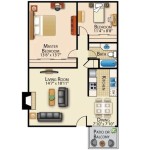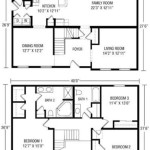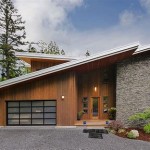House plans are the blueprints or detailed drawings used to build a house. They provide information on the layout, structure, and design of a house, and are essential for obtaining building permits and ensuring that the house is built according to code. House plans can be purchased from a variety of sources, including architects, home builders, and home design centers.
Building your own house can be a rewarding experience, and with the right tools and knowledge, it’s possible to do it yourself. One of the most important steps in building your own house is creating a set of house plans. House plans will help you to visualize your dream house, and will provide the necessary information to get started on construction. In this article, we’ll provide you with a step-by-step guide to building your own house plans.
Before you begin, it’s important to do some research and decide what type of house you want to build. There are many different styles of houses to choose from, so take some time to browse through magazines and websites to get ideas. Once you have a general idea of what you want, you can start to create your own house plans.
When creating your own house plans, there are a few key things to keep in mind:
- Determine the size and layout of your house.
- Choose the right materials for your house.
- Consider the energy efficiency of your house.
- Plan for the future needs of your family.
- Make sure your house plans meet building codes.
- Get feedback from a professional.
- Create a detailed budget.
- Get the necessary permits.
- Hire qualified contractors.
- Follow the building codes and plans carefully.
By following these tips, you can create a set of house plans that will help you build the home of your dreams.
Determine the size and layout of your house.
One of the first things you need to do when creating your house plans is to determine the size and layout of your house. This will depend on a number of factors, including the size of your family, your lifestyle, and your budget.
- Number of bedrooms and bathrooms: How many bedrooms and bathrooms do you need? Do you need a guest room or a home office? Do you want a master suite with a walk-in closet and a private bathroom?
- Living space: How much living space do you need? Do you want a formal living room and dining room, or a more open floor plan with a great room? Do you need a family room or a playroom for the kids?
- Kitchen: What kind of kitchen do you want? Do you want a large kitchen with a center island and a walk-in pantry, or a smaller kitchen with just the basics? Do you need a separate dining room or an eat-in kitchen?
- Outdoor space: Do you want a deck or patio? A fenced-in yard? A swimming pool? Consider how you want to use your outdoor space and plan accordingly.
Once you have a good idea of the size and layout of your house, you can start to draw up your house plans. Be sure to include all of the details, such as the dimensions of the rooms, the location of the windows and doors, and the type of materials you want to use.
Choose the right materials for your house.
The materials you choose for your house will have a big impact on the cost, durability, and energy efficiency of your home. There are a wide variety of materials to choose from, so it’s important to do your research and choose the materials that are right for you.
- Framing: The framing of your house is the skeleton of your home. It provides the structural support for the rest of the house. The most common framing materials are wood, steel, and concrete.
- Exterior walls: The exterior walls of your house protect your home from the elements. They also play a big role in the overall appearance of your home. The most common exterior wall materials are wood, brick, stone, and vinyl siding.
- Roofing: The roof of your house protects your home from the elements. It also plays a big role in the overall appearance of your home. The most common roofing materials are asphalt shingles, metal roofing, and tile roofing.
- Windows and doors: The windows and doors of your house allow light and air to enter your home. They also play a big role in the overall appearance of your home. The most common window and door materials are wood, vinyl, and aluminum.
Once you have chosen the materials for your house, you can start to build your dream home!
Consider the energy efficiency of your house.
The energy efficiency of your house is an important factor to consider when creating your house plans. A more energy-efficient house will cost less to operate and will be more comfortable to live in. There are many ways to improve the energy efficiency of your house, including:
- Insulating your house: Insulation helps to keep your house warm in the winter and cool in the summer. It can be installed in the walls, ceiling, and floor of your house.
There are many different types of insulation to choose from, so be sure to do your research and choose the type of insulation that is right for you.
- Installing energy-efficient windows and doors: Energy-efficient windows and doors have a special coating that helps to keep heat in during the winter and out during the summer. They can also help to reduce noise pollution.
When choosing windows and doors, be sure to look for the ENERGY STAR label. This label indicates that the window or door meets certain energy efficiency standards.
- Using energy-efficient appliances: Energy-efficient appliances use less energy to operate than traditional appliances.
When purchasing appliances, be sure to look for the ENERGY STAR label. This label indicates that the appliance meets certain energy efficiency standards.
- Installing a solar energy system: A solar energy system can generate electricity from the sun. This electricity can be used to power your home and reduce your reliance on the grid.
Solar energy systems are becoming more and more affordable, and they can be a great way to save money on your energy bills.
By following these tips, you can create an energy-efficient house that will be comfortable to live in and will save you money on your energy bills.
Plan for the future needs of your family.
When creating your house plans, it’s important to consider the future needs of your family. Your family’s needs will change over time, so it’s important to design a house that can adapt to those changes.
- Changing family size: If you’re planning to have children, you’ll need to make sure your house has enough bedrooms and bathrooms to accommodate your growing family. You may also want to consider adding a playroom or a home office to your plans.
- Aging in place: If you’re planning to stay in your home as you age, you’ll need to make sure your house is accessible and safe. This may mean adding features such as wider doorways, grab bars in the bathroom, and a first-floor bedroom.
- Changing lifestyle: Your lifestyle may change over time, so it’s important to design a house that can accommodate those changes. For example, if you’re planning to retire, you may want to consider adding a sunroom or a workshop to your plans.
- Resale value: If you’re planning to sell your house in the future, you’ll need to make sure your house is appealing to potential buyers. This means designing a house that is both functional and stylish.
By considering the future needs of your family, you can create a house that will be comfortable and enjoyable to live in for many years to come.
Make sure your house plans meet building codes.
Building codes are regulations that govern the construction of buildings. These codes are in place to ensure that buildings are safe and habitable. When creating your house plans, it’s important to make sure that they meet all applicable building codes.
There are a number of different building codes that may apply to your house, depending on your location. These codes may include:
- Building permit: Before you can start construction on your house, you will need to obtain a building permit from your local building department. The building department will review your house plans to make sure that they meet all applicable building codes.
- Zoning laws: Zoning laws regulate the use of land in a particular area. These laws may restrict the type of house that you can build on your property. For example, some zoning laws may only allow single-family homes in certain areas.
- Fire codes: Fire codes regulate the construction of buildings to minimize the risk of fire. These codes may specify the type of materials that can be used in the construction of your house, as well as the number and location of exits.
- Plumbing codes: Plumbing codes regulate the installation of plumbing systems in buildings. These codes may specify the type of pipes and fixtures that can be used, as well as the minimum size of the plumbing system.
- Electrical codes: Electrical codes regulate the installation of electrical systems in buildings. These codes may specify the type of wiring and fixtures that can be used, as well as the minimum size of the electrical system.
By making sure that your house plans meet all applicable building codes, you can help to ensure that your house is safe and habitable.
To make sure that your house plans meet building codes, you can hire a licensed architect or engineer to review your plans. You can also contact your local building department for more information about building codes.
Get feedback from a professional.
Once you have created a draft of your house plans, it’s a good idea to get feedback from a professional. A professional can review your plans and provide feedback on the design, layout, and functionality of your house. This feedback can help you to identify any potential problems with your plans and make sure that your house is built to your specifications.
- Licensed architect or engineer: A licensed architect or engineer can review your house plans and provide feedback on the design, layout, and functionality of your house. They can also help you to make sure that your house plans meet all applicable building codes.
- Contractor: A contractor can review your house plans and provide feedback on the constructability of your house. They can also help you to estimate the cost of building your house.
- Interior designer: An interior designer can review your house plans and provide feedback on the layout and functionality of your house. They can also help you to choose finishes and fixtures for your home.
- Friend or family member: A friend or family member who has experience in construction or design can review your house plans and provide feedback. They can also help you to identify any potential problems with your plans.
Getting feedback from a professional can help you to create a set of house plans that are well-designed, functional, and buildable. It can also help you to avoid costly mistakes during the construction process.
Create a detailed budget.
Creating a detailed budget is one of the most important steps in building your own house. A budget will help you to track your expenses and make sure that you don’t overspend. It will also help you to identify potential cost savings and make informed decisions about your project.
- Estimate the cost of materials: The cost of materials will vary depending on the size and complexity of your house. You can get estimates from local suppliers or online retailers.
- Estimate the cost of labor: The cost of labor will vary depending on the location of your project and the availability of skilled workers. You can get estimates from local contractors or online job boards.
- Estimate the cost of permits and inspections: You will need to obtain building permits and inspections from your local building department. The cost of permits and inspections will vary depending on the size and complexity of your project.
- Estimate the cost of unexpected expenses: It’s always a good idea to budget for unexpected expenses. This could include things like weather delays, material shortages, or changes to the plans.
Once you have estimated the cost of your project, you can create a budget. Your budget should include a breakdown of all of your estimated costs, as well as a contingency fund for unexpected expenses. It’s important to stick to your budget as closely as possible, but be prepared to make adjustments as needed.
Get the necessary permits.
Before you can start construction on your house, you will need to obtain the necessary building permits. Building permits are required to ensure that your house is built to code and that it meets all safety and zoning requirements. The process for obtaining building permits varies from municipality to municipality, but there are some general steps that you can follow:
1. Contact your local building department. The first step is to contact your local building department and inquire about the building permit process. They will be able to provide you with the necessary forms and information.
2. Submit your house plans. Once you have the necessary forms, you will need to submit your house plans to the building department for review. The building department will review your plans to make sure that they meet all applicable building codes.
3. Pay the permit fees. Once your plans have been approved, you will need to pay the permit fees. The permit fees vary depending on the size and complexity of your project.
4. Post the permit. Once you have obtained your building permit, you will need to post it in a conspicuous location on your property. This will let everyone know that you have the necessary permits to build your house.
It is important to note that the building permit process can take some time, so it is important to start the process early. You should also be aware that you may need to obtain additional permits, such as electrical permits and plumbing permits, depending on the scope of your project.
Hire qualified contractors.
Once you have obtained the necessary permits, you will need to hire qualified contractors to build your house. Hiring qualified contractors is essential to ensure that your house is built to code and that it meets your expectations. Here are some tips for hiring qualified contractors:
Get referrals from friends and family. Ask your friends and family members if they have any recommendations for qualified contractors. They may have had positive experiences with contractors in the past that they can recommend to you.
Check online reviews. There are a number of websites that allow customers to review contractors. These reviews can be a valuable resource for finding qualified contractors in your area.
Get bids from multiple contractors. Once you have a few potential contractors in mind, get bids from each of them. This will help you to compare prices and services and choose the contractor that is right for you.
Check the contractor’s license and insurance. Make sure that the contractor you hire is licensed and insured. This will protect you in the event that the contractor does not complete the work as agreed or if the work is defective.
Get a written contract. Before the contractor begins work, get a written contract that outlines the scope of work, the price, and the payment schedule. This will help to protect both you and the contractor.
Follow the building codes and plans carefully.
Once you have hired qualified contractors and obtained the necessary permits, you can begin construction on your house. It is important to follow the building codes and plans carefully to ensure that your house is built to code and that it meets your expectations.
The building codes are a set of regulations that govern the construction of buildings. These codes are in place to ensure that buildings are safe and habitable. The building codes may vary from municipality to municipality, so it is important to check with your local building department to find out which codes apply to your project.
The house plans are a set of drawings that show the layout, design, and construction details of your house. The house plans should be prepared by a licensed architect or engineer. The house plans will include information on the size and location of the rooms, the type of materials to be used, and the structural details of the house.
It is important to follow the building codes and plans carefully to ensure that your house is built to code and that it meets your expectations. If you do not follow the building codes and plans, your house may not be safe or habitable. You may also have difficulty obtaining a building permit or selling your house in the future.










Related Posts








